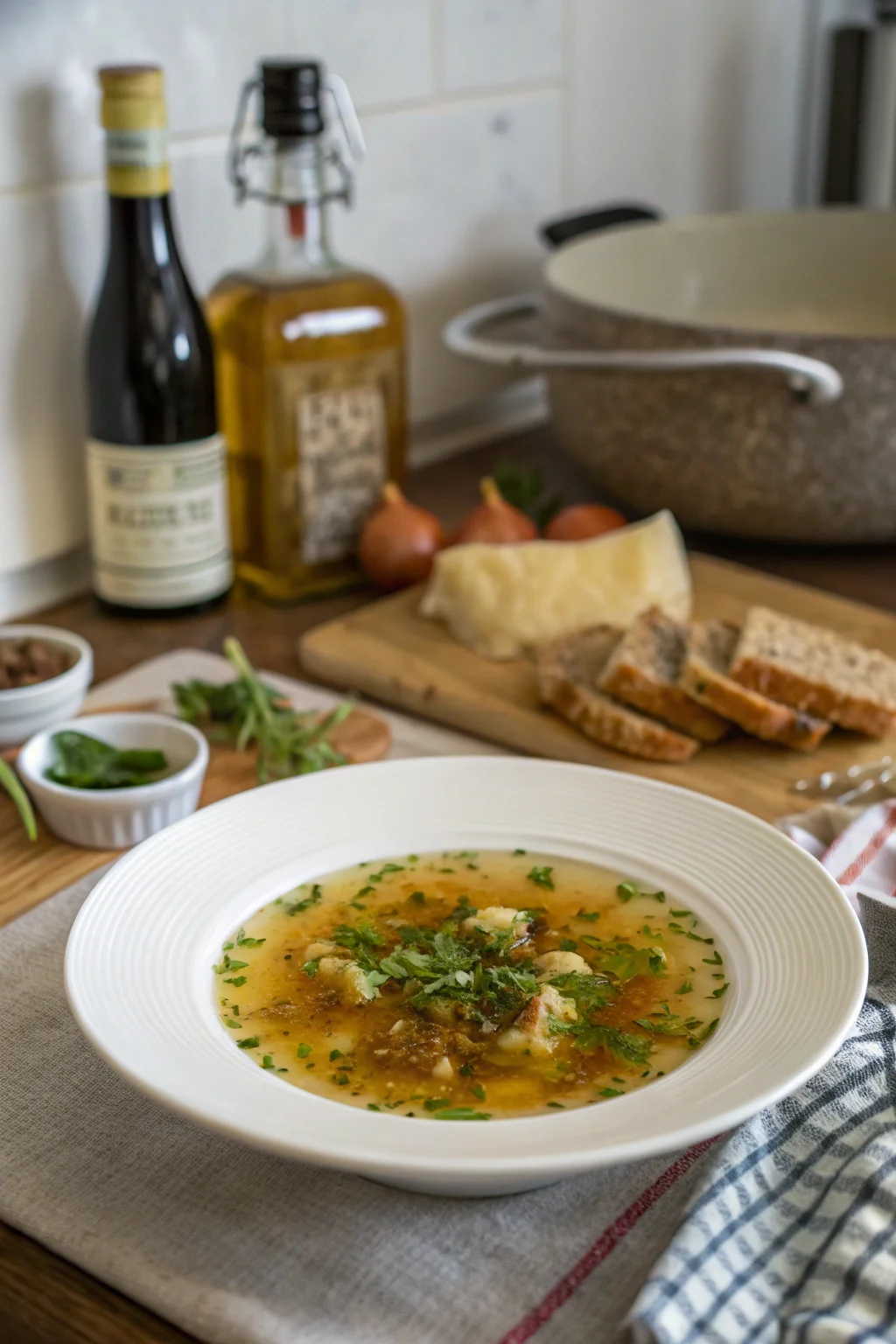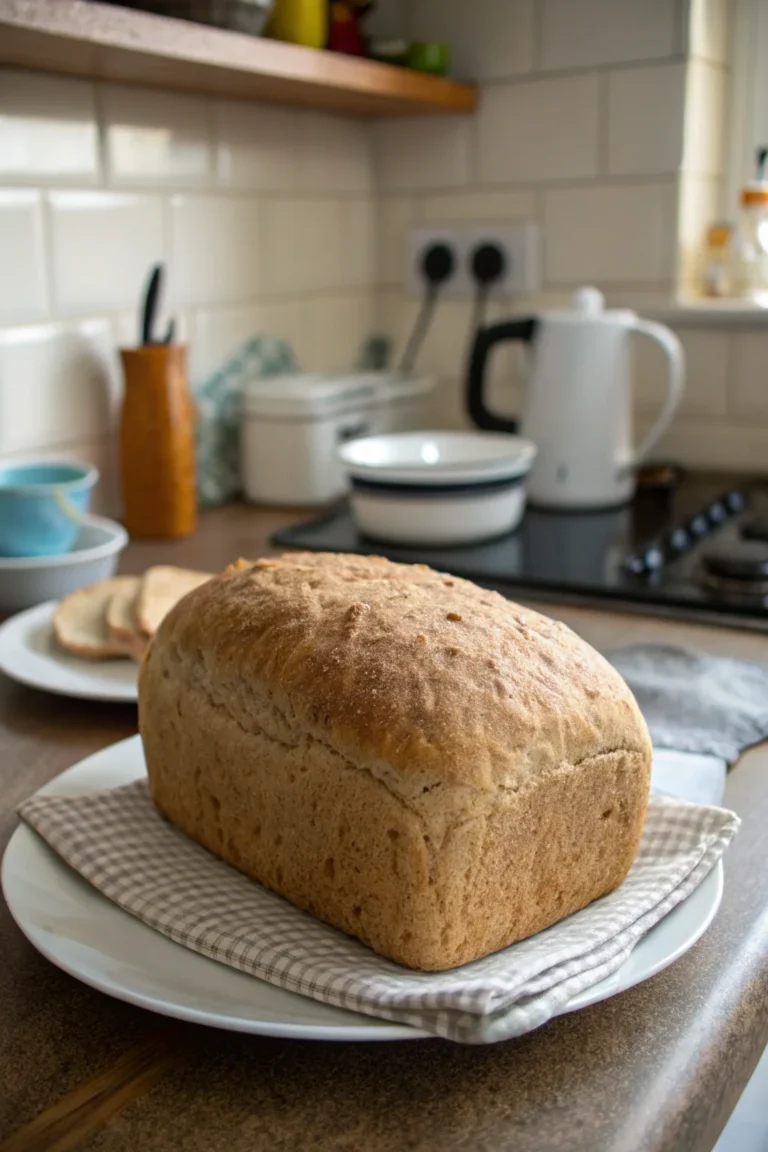What Is the Difference Between Stock and Broth?
Stock and broth are two essential components in the culinary world, often used interchangeably but with subtle differences that set them apart. Understanding these differences can elevate your cooking, allowing you to choose the right base for soups, sauces, and other dishes. This guide will answer common questions about stock and broth, providing clarity and tips for home cooks and food enthusiasts alike.
Table of Contents
What Is Stock?

Stock is a savory liquid created by simmering animal bones, vegetables, and herbs for an extended period. The slow cooking process extracts collagen from the bones, resulting in a rich, gelatinous texture. Stock is often used as a foundational ingredient in sauces, soups, and stews due to its deep flavor.
Key Characteristics of Stock:
- Ingredients: Bones, vegetables (like carrots, onions, celery), herbs, and spices. These components contribute to stock’s robust base, providing a depth that enhances the flavor of many dishes.
- Cooking Time: Usually 4-6 hours or more for maximum flavor. This lengthy simmering allows the full extraction of flavors and nutrients, especially collagen, which is crucial for the stock’s texture.
- Texture: Typically gelatinous when cooled due to collagen from bones. This gel-like texture is what gives gravies and sauces their appealing body.
Making your own stock can be incredibly rewarding. It allows you to control the quality of ingredients and adjust flavors to suit your taste. For more on making your own stock, check out our guide on how to make homemade chicken stock.
What Is Broth?
Broth is a flavorful liquid made by simmering meat and vegetables with herbs and spices. Unlike stock, broth uses more meat than bones, resulting in a lighter, more delicate flavor. Broth is often enjoyed on its own or as a base for soups and risottos.
Key Characteristics of Broth:
- Ingredients: Meat, vegetables, herbs, and spices. The emphasis on meat gives broth its characteristic taste, making it a satisfying beverage on its own, especially when seasoned appropriately.
- Cooking Time: Usually 1-2 hours. This shorter cooking time compared to stock suits the extraction of flavors from the meat without overcooking or losing its delicate taste.
- Texture: Lighter, less gelatinous than stock. This makes broth an excellent option for soups and dishes where a less dense liquid is preferred.
Explore our recipe for a comforting chicken noodle soup using broth. By incorporating quality meats and fresh vegetables, you can make a broth that’s both nutritious and delicious.
How Do Stock and Broth Differ in Ingredients?
The primary difference in ingredients lies in the use of bones versus meat. Stock is primarily made with animal bones, which contribute to its rich texture, while broth uses more meat, leading to a lighter flavor. Vegetables and herbs are common in both.
- Stock Ingredients: Bones, minimal meat, vegetables, herbs. This composition is ideal for extracting gelatin, which provides thickening properties and a deeper umami flavor.
- Broth Ingredients: Meat, some bones, vegetables, herbs. This results in a more straightforward, clean flavor profile that complements delicate recipes.
For more detail, Epicurious offers a comprehensive breakdown of both. Understanding these differences can help you choose the right one for your culinary needs, whether you are crafting a sauce or preparing a light soup.
Can You Use Stock and Broth Interchangeably?
While stock and broth can often be used interchangeably, the choice depends on the desired texture and flavor intensity of your dish. Stock’s richer flavor and thicker texture make it ideal for sauces and stews, whereas broth’s lighter taste suits soups and risottos.
Considerations:
- Texture Needs: Use stock for a thicker consistency. Its gelatin content is perfect for sauces that need a rich mouthfeel.
- Flavor Intensity: Choose broth for a lighter, more subtle flavor. Broth’s mildness is suitable for dishes where a stronger flavor might overwhelm the other ingredients.
When deciding between the two, consider the role the liquid will play in your dish. For example, a hearty beef stew benefits from the richness of stock, while a delicate chicken soup may shine with the lighter touch of broth.
What Are the Nutritional Differences Between Stock and Broth?

Both stock and broth offer nutritional benefits but differ slightly due to their ingredients.
- Stock: Rich in collagen, promoting joint and skin health. The prolonged cooking of bones releases minerals like calcium and phosphorus, essential for bone health.
- Broth: Typically lower in calories, with a lighter nutrient profile. It still provides significant protein and vitamins from the meat and vegetables used.
Nutritionist-approved insights can be found on Healthline. These differences can influence dietary choices, particularly for those focused on specific nutritional goals like increasing collagen intake or reducing calorie consumption.
How Can You Make Stock at Home?
Making stock at home is a rewarding process that enhances your dishes with deep flavor. Here’s a detailed approach to crafting your own stock:
Steps to Make Stock:
- Gather Ingredients: Collect bones, such as chicken carcasses or beef knuckles, along with vegetables like onions, carrots, and celery. Add herbs like thyme or parsley for extra flavor.
- Simmer Slowly: Place ingredients in a large pot, cover with water, and bring to a simmer. Reduce heat and cook for 4-6 hours or overnight. This slow extraction process is crucial for developing the stock’s depth and body.
- Strain and Store: Once cooked, strain out the solids using a fine-mesh sieve or cheesecloth. Let it cool before refrigerating or freezing in portioned containers.
By making stock at home, you can tailor the flavors to your liking, ensuring that each batch is perfectly suited to your culinary needs.
How Can You Make Broth at Home?
Homemade broth is easy to prepare and perfect for soups and sipping. Here’s how to make it effectively:
Steps to Make Broth:
- Choose Meat: Select your preferred meat, such as chicken or beef. Using meat with some bones adds flavor complexity.
- Add Vegetables and Herbs: Include onions, carrots, and parsley. Herbs like bay leaves and thyme can enhance the broth’s aroma and taste.
- Simmer and Strain: Place all ingredients in a pot, cover with water, and simmer for 1-2 hours. Strain out the solids, and you’re left with a clear, flavorful broth.
Broth can be a comforting drink on its own, especially during colder months, or a robust base for numerous recipes.
Do Stock and Broth Have Different Uses in Cooking?
Yes, stock and broth have distinct uses based on their flavor profiles and textures.
- Uses for Stock: Ideal for gravies, sauces, and stews. The gelatin content helps thicken sauces naturally, adding richness and volume.
- Uses for Broth: Perfect for soups, risottos, and sipping. Its lighter consistency is suitable for dishes where a more delicate touch is required, ensuring the central ingredients shine through.
Understanding these uses allows you to select the best option for your specific dish, enhancing the overall taste and texture.
Can You Freeze Stock and Broth?
Both stock and broth freeze well, making them convenient for future use. Here are some tips for freezing:
Freezing Tips:
- Portion in Containers: Use ice cube trays for small portions. Once frozen, transfer to freezer bags for easy, measured access.
- Label and Date: Ensure freshness by keeping track of storage times. Proper labeling prevents confusion and helps maintain the quality of your stock or broth.
Freezing these liquids not only extends their shelf life but also provides you with quick meal solutions, making cooking more efficient.
How Long Do Stock and Broth Last in the Refrigerator?
Proper storage is key to keeping your stock and broth fresh. Here’s what to expect:
- Stock: Lasts about 4-5 days. Its high gelatin content helps preserve it slightly longer than broth.
- Broth: Typically stays fresh for 3-4 days. Because it is less dense, it may spoil quicker than stock.
Refrigeration tips can be found at The Kitchn. Always ensure that your stock and broth are stored in airtight containers to prevent contamination and maintain their quality.
What Are the Flavor Profiles of Stock and Broth?
The flavor profiles differ due to their ingredients and cooking times.
- Stock: Deep, rich, and hearty. Its robust flavor profile is ideal for dishes that require a strong base, providing a complex layer of taste.
- Broth: Light, savory, and more delicate. This makes it suitable for dishes where a subtle enhancement is desired without overwhelming the other ingredients.
Choosing between these profiles depends on the dish’s requirements and the flavor nuances you wish to highlight.
Can Vegetarians Use Stock and Broth?
Vegetarians can use vegetable stock and broth, made without animal products. These versions provide similar benefits and are versatile in vegetarian and vegan dishes.
Vegetarian Alternatives:
- Vegetable Stock: Use roasted vegetables for depth. Roasting enhances the natural sugars in vegetables, adding a richer flavor.
- Vegetable Broth: Simmer vegetables and herbs for a lighter taste. This option is perfect for light soups and as a cooking liquid for grains like quinoa or rice.
These alternatives ensure that vegetarians can enjoy the benefits and flavors of stock and broth without compromising their dietary choices.
Is It Better to Buy or Make Stock and Broth?
Homemade stock and broth offer superior flavor and control over ingredients, but store-bought versions are convenient.
Considerations:
- Homemade: Customizable, rich flavor. Provides an opportunity to use leftover ingredients and tailor the taste to specific needs.
- Store-Bought: Quick, varied options. Available in various flavors and types, these can be a lifesaver when time is short.
Deciding whether to make or buy stock and broth depends on the time you have and the specific needs of your dish. Both options have their place in the kitchen.
Wrap-Up
Stock and broth are versatile ingredients that bring unique flavors and textures to your dishes. By understanding their differences, you can make informed decisions in your cooking, whether you’re crafting a hearty stew or a delicate soup. Experiment with both to discover what works best for your culinary creations. For more insights and recipes, explore our cooking tips section.






